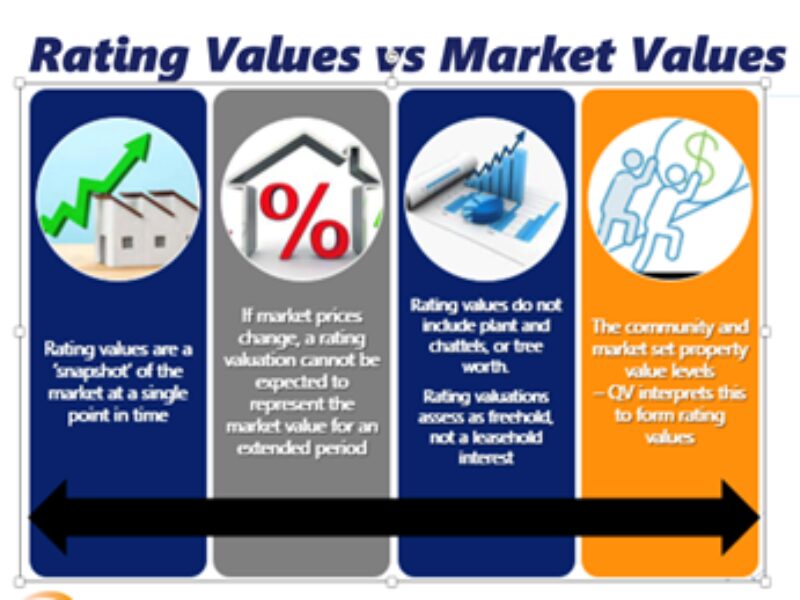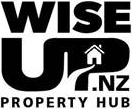Rating Value vs Market Value
By James Wilson | Guest Article | Quotable Value

Rating Valuations 101
What is a rating valuation and how are they calculated?
As New Zealand’s leading independent provider of rating valuations – proudly serving more than 80% of local councils nationwide – no business is better placed to answer these questions than QV. In fact, rating valuations are often colloquially known by some Kiwis as a “QV”.
So, with that in mind, here’s everything you need to know about rating valuations…
What is a rating valuation?
Every property in New Zealand usually receives a new rating valuation every three years, reflecting its likely selling price on the effective revaluation date, not including chattels.
Think of them as like a snapshot in time of your property’s value at a moment in time (ie. the effective valuation date).
Every rating valuation is made up of three components:
- Capital Value – the total sum that the property’s owner might be expected to receive if sold at the time of valuation.
- Land Value – the sum that the property owner’s might be expected to receive if the land was sold, without the building, and without any other improvements being made.
- Value of Improvements – land values and capital values are assessed independently of each other, meaning the difference between the two is effectively the value of improvements.
As land values have increased at a significantly higher rate than capital values these past few years, the value of improvements (e.g. your house, other buildings, landscaping etc.) can sometimes fall, even as both the land and capital values increase.
What is an RV used for?
Rating valuations are produced for one thing and one thing only – to help local councils apportion rates for the following three-year period.
They are not designed to be used for raising finance or as a guide for buying or selling property. The fact that many people still use rating valuations in this way, is testament to the trust and confidence put in them by the public at large, but it’s certainly not our intention for them to be used in this way.

Any changes in the market since the effective revaluation date will not be included in the new rating valuations, which often means that a sale price achieved today will be different to the new rating valuation – especially in a fast moving market like the one we’ve experienced since Covid-19 first came to town.
How are rateable values calculated?
Rating valuations are calculated using a highly complex and detailed process that utilises all relevant property sales from your area. A large number of properties will also be physically assessed, particularly those that have been issued building consents in the last three years.
Rating valuations take into account all factors influencing a property’s likely selling price, including its size, features and any recent refurbishments.
Given the vast amount of properties in New Zealand, we’re simply unable to view every single property in person. So, with increasing technology available to rating valuers, QV is constantly innovating to ensure that the rating valuation process is as effective and accurate as possible.
Tools now utilised within the rating valuation process include:
- Access to large data sets and analytics
- Advanced models and modelling techniques
- Self-built valuation technologies for in-field data capture and report generation
- Advanced mapping, including GIS and Lidar
- Access to council plans and specifications, CCC, post line inspection etc.
We then ensure the accuracy of our values using statistical testing and thematic mapping, before they undergo a rigorous audit by the Office of the Valuer-General to ensure they meet rigorous quality standards.
Objecting to your rating value
Property owners have a right to object to their rating valuation. This is an important democratic mechanism for guaranteeing the integrity of the rating valuation system. You can find the details of how to object to raise an objection when you receive your new Notice of Rating Valuation.
Once we’ve received an objection, we will perform a robust review of the valuation, including an on-site inspection.
Transparency of how a rating objection is processed has always been a key focus for us, so we’ve recently launched a new online report, delivered via a secure folder, that includes all the pertinent property details and recent sales used in determining the value.
The district valuation roll
We’re not just resting on our hands in the intervening years between rating valuations – we’re always actively maintaining the District Valuation Roll (DVR), which is the dataset that every council in New Zealand is legally required to maintain for the purpose of striking rates.
Keeping this data up to date – for example, by processing every building consent across the country in any given year – is the cornerstone of the revaluation process and ensures we’re good to start valuing every single property in your district when your next triennial rating valuation comes around.
Guest Article Updated August 12, 2024 by Trish Willis, Member of NZ Property Institute. Send us your question.
Stay updated
Keep up to date with NZ’s most reputable property advice by adding your details below:


